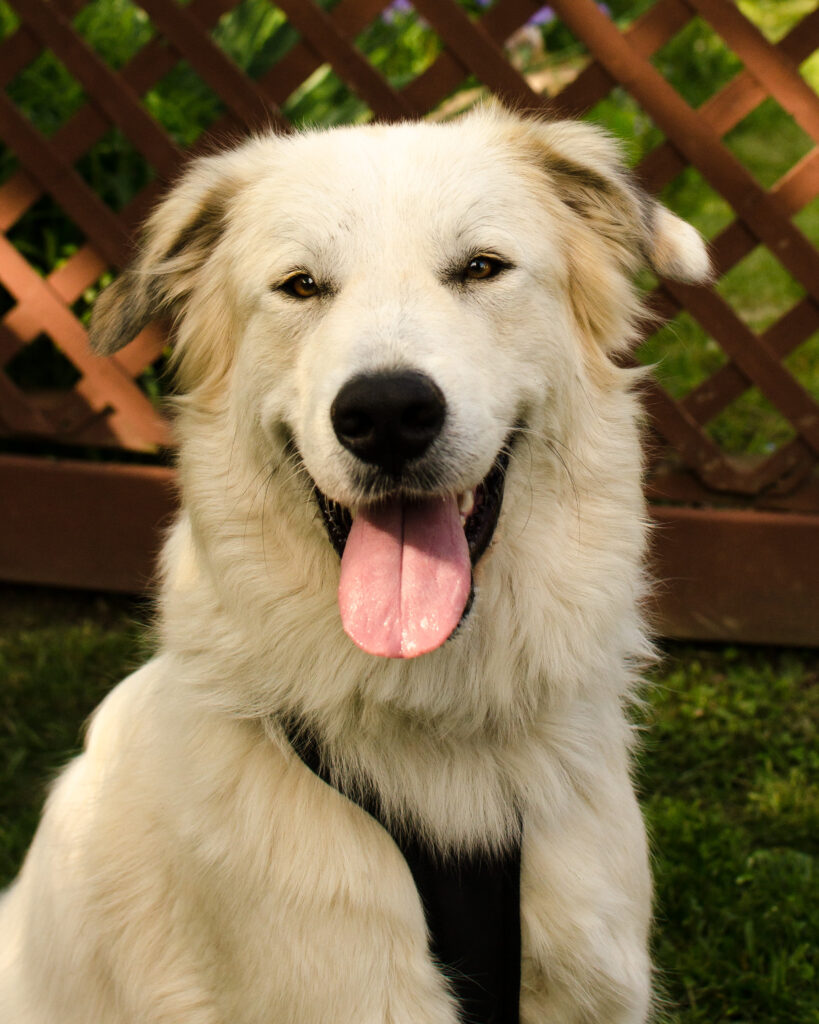By April Minech
The Great Pyrenees club has been around for a long time – the late sixties to be exact. “It started as a confirmation club, where members that participated in shows got together and helped and mentored each other with things such as how to stack and groom dogs, what types of head characteristics you were looking for, “says Lynn Pilarski, director and 30-year volunteer. “Through the years, it has grown into more of a rescue club. I got involved around 1988 when a friend called me and said ‘Hey, I know about this dog that’s in a really difficult situation, can you help him?’ And so, I did.”
Lynn says it weighed on her that there were dogs out there that had no help, nowhere to turn except for a shelter. She encouraged friends to join her, and they did the best they could. “I remember back in that first year, I think we helped six or seven dogs. How I yearn for those days!” She exclaims. “There are so many more out there that need us now. We help about 60 or 70 dogs a year, which amazes me because Great Pyrenees are not that popular a breed of dog.”
The biggest way to help the group would be to foster a dog, if possible. “Without foster homes, rescue is moot,” she says with an air of sadness. There’s just no room to take more in. “If you can’t foster, fundraising is the next best thing. We hold all types of events, and always need volunteers and supporters.” The club also needs people to help with transports and home checks, running dogs to the vet, and other day to day services. “But I can’t emphasize the importance of foster homes,” she repeats to make the point. The group has about sixty members, with a solid core of 10-12 regulars.
Where are all these dogs coming from, you may wonder. Lynn says they work with people who call looking for help, and with shelters when they get a Great Pyrenees in. But she admits the most anxiety riddled part is coordinating transport services, and she don’t do well with that end of it since you have to rely on every link in the chain doing their part. “What if I get a call from someone 6 hours away telling me their relay didn’t show up? If I can’t get there, the dog ultimately pays the price.”
If you feel you may be a good fit to help as a foster, you can contact Lynn directly at Lapyr5@live.com. “The process is similar to the requirements of adopting a dog, with an application and home check. When we get a dog in that seems like a good fit for that applicant, we contact them.”
What would rescue like you to know about the breed? “The simplest thing to say is they’re not “white” Golden Retrievers,” Lynn chuckles, saying she hears that a lot. “People see them and think they are sweet and cuddly, but they are actually working dogs that are well trained, especially if we have them out in public. They don’t just come that way. No dog comes that way.” She says that the dogs can be stubborn and willful and need someone who can handle their attitude, or they can run all over you. “They were bred to be working dogs, and they’re smart. Dogs that were bred to do jobs have independent thinking and were usually forced to rely on their own counsel. That doesn’t just go away because you’re in the picture. They try to do what their instincts tell them to do.”
A BEGINNER’S GUIDE TO GREAT PYRENEES
The Great Pyrenees, or Pyrenean Mountain Dog, is an ancient guardian breed that was bred to handle the guarding of flocks of sheep and other livestock from predators without human intervention. They are regal and predominately white, although some have coloring on their bodies. The double dew claws on the hind legs are also a classic breed characteristic. Typically, Great Pyrenees will range from 90-150 pounds at a healthy weight. The Great Pyrenees were bred to think independently of humans to successfully do their job, and this can often be interpreted as stubbornness as they typically do not strive to please people or listen to commands. Sharing your life with a Great Pyrenees requires a deep understanding of this trait and the patience to be calm and gentle! They can be intimidating with their instinctual deep bark, and it is usually impossible to train this breed NOT to bark. Great Pyrenees are known for roaming, so they require at least a 6’ fence (never an invisible fence) or a leash at all times Great Pyrenees also typically do well with children and small animals, but It’s important to remember that the dogs do not fully mature until at least three years of age. Until then, you will have a clumsy puppy that can easily knock over a toddler accidentally. Drool and fur come for free with every Great Pyrenees! As for training, they respond very well to positive reinforcement through treats and praise and can be extremely sensitive to any harsh words or methods. While they may show little interest in training and will see what they can get away with, training is a must to prevent an unruly, 100-pound puppy. They have specific grooming needs as well and should never be shaved as their coat keeps them warm in the winter and cool in the summer. Shedding occurs year-round with a blowing of their undercoat in the fall and spring and should be brushed 2-3 times per week to prevent mats.
www.swpapyr.org fb Great Pyrenees Club of Western Pa Rescue
412- 526-1156



